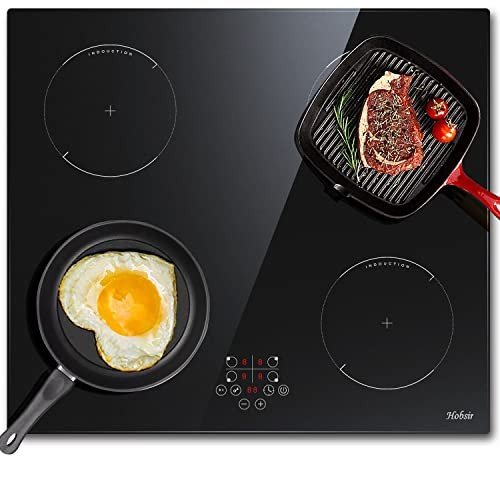Understanding Ovens and Hobs: A Comprehensive Guide
When it comes to cooking home appliances, ovens and hobs are among the most important tools found in contemporary kitchen areas. They play essential functions in meal preparation, transforming raw active ingredients into scrumptious dishes. Understanding the distinctions in between various kinds of ovens and hobs and how to pick the ideal one can make a significant difference in cooking effectiveness and food quality.
This post explores ovens and hobs in detail, offering insights into their types, functions, advantages, and common FAQs. Whether you are a skilled chef or an amateur cook, this details will assist you make notified decisions for your cooking requirements.
Types of Ovens
Ovens come in a number of types, each designed for particular cooking techniques and styles. Here is an in-depth appearance at the most typical kinds of ovens:
| Type of Oven | Description | Best For |
|---|---|---|
| Standard Oven | Utilizes heating elements located at the top and bottom for even cooking. | Baking, roasting, and general cooking |
| Stove | Features a fan that circulates hot air for fast and even cooking. | Baking pastries and cookies, roasting meats |
| Steam Oven | Utilizes steam to cook food, protecting wetness and nutrients. | Veggies and fish |
| Microwave Oven | Rapidly cooks food using microwave radiation. | Reheating and fast meals |
| Wall Oven | Built directly into the wall for space-saving cooking services. | Small kitchen areas and modern styles |
| Skill Level | Provides multiple cooking modes consisting of baking, broiling, and toasting. | Flexible cooking requires |
Types of Hobs
Hobs, likewise referred to as cooktops, come in numerous types based on their fuel source and style. Comprehending these alternatives can assist in finding the right fit for your kitchen setup:
| Type of Hob | Description | Best For |
|---|---|---|
| Gas Hob | Utilizes gas flames for cooking, offering instant heat control. | Standard cooking techniques |
| Electric Hob | Uses electric coils or induction elements to heat pots and pans. | Even heat distribution |
| Induction Hob | Uses electromagnetic energy to directly heat up pots, offering fast and effective cooking. | Energy-efficient cooking |
| Solid Plate Hob | A type of electric hob with strong plates that takes some time to warm up however retains heat well. | Slow cooking |
| Ceramic Hob | Features a glass-ceramic surface enabling for simple cleaning, with electric heating elements listed below. | Visual appeal |
Aspects to Consider When Choosing an Oven and Hob
Selecting the ideal oven and hob mix requires mindful consideration of a number of elements. Below is a list of crucial aspects to keep in mind:
Cooking Style
- Are you a daily cook or an occasional baker?
- Do you choose steaming or frying?
Kitchen Size
- What area is offered in your kitchen for the appliances?
- Will you need integrated or freestanding models?
Fuel Source
- Do you have access to gas, or would you choose electric?
- Are you thinking about induction cooking technology?
Budget
- What is your spending plan for buying an oven and hob?
- Are you thinking about a high-end design or a more budget friendly option?
Energy Efficiency
- Are you aiming to reduce your energy intake?
- Do you prefer appliances that feature high-efficiency scores?
Advantages of Ovens and Hobs
Both ovens and hobs bring special advantages to the kitchen. Here's a summary of some advantages:
Ovens:
- Versatility: Able to manage a vast array of cooking approaches from baking to roasting and broiling.
- Consistent Results: Even heat distribution offers dependable cooking outcomes.
- Big Capacity: Ideal for large meals and batch cooking.
Hobs:
- Control: Gas hobs offer immediate heat modifications, helpful for exact cooking.
- Efficiency: Induction hobs are understood for their quicker heat-up times and energy performance.
- Independent Cooking: Multiple hobs enable cooking several meals all at once.
Picking the right ovens and hobs is essential for anybody looking to improve their cooking skills and kitchen effectiveness. By understanding the numerous types of each appliance, alongside their advantages and features, customers can make educated decisions that deal with their culinary practices and choices.
As cooking areas develop, so do the technologies surrounding cooking home appliances. Buying the right mix of an oven and hob can lead to much better cooking experiences, higher food quality, and even enjoyable time invested in the kitchen.
Frequently Asked Questions (FAQs)
What is the distinction in between convection and standard ovens?
- A stove utilizes a fan to circulate air for even cooking, while a conventional oven relies only on the top and bottom heating components.
How do induction hobs work?
- Induction hobs use electro-magnetic fields to straight warm pots and pans made from magnetic materials, leading to faster cooking times and more energy effectiveness.
Are gas hobs more secure than electric hobs?
- Safety depends on usage and installation. Best Oven And Hob require correct ventilation and can provide a fire danger, while electric hobs might present risks of burns due to their hot surfaces.
Can I bake in a steam oven?
- Yes, a steam oven can be used for baking, typically leading to moister and fluffier baked items, especially breads and pastries.
What should I search for in an integrated oven?
- Try to find functions like capacity, cooking modes, energy effectiveness ratings, and ease of cleansing.
By thinking about the information and guides supplied in this post, readers can quickly browse the world of ovens and hobs, making sure that they pick the best home appliances to fit their cooking requirements.

